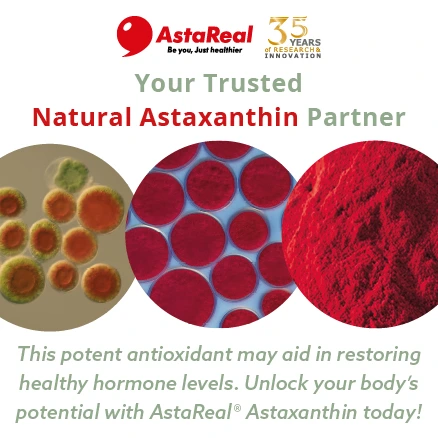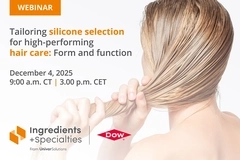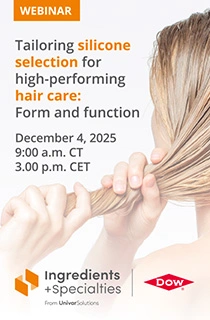Toxic skin-lightening industry drives disproportionate mercury harm
Key takeaways
- Women face disproportionate exposure to toxic mercury-containing skin-lightening products.
- Colonialist beauty ideals, preferences for lighter-skinned partners, and employer appearance expectations push women to use these products.
- Mislabeled creams can expose pregnant women and babies to mercury.
The skin lightening industry is one of the fastest-growing beauty industries worldwide, according to the Women’s Caucus for the Minamata Convention. Mercury is often used as a skin-lightening agent due to its melanin-blocking properties, but the compound is highly toxic. The caucus warns that women are disproportionately harmed by its inclusion in cosmetics.
“Women are the largest consumer group of cosmetics and personal care products. They use an average of 15 different such products every day,” the Women’s Caucus for the Minamata Convention tells Personal Care Insights.
The caucus warns that colorist beauty ideals are reinforced by male preferences and employer expectations. These ideals push women toward toxic skin-lightening creams, helping sustain a profitable market for whitening products.
“Reasons for wanting to lighten the skin are firmly anchored in colonial history, and the racist structures of our globalized world,” the group says.
Demand is especially high in lower-income countries where colonial-era societal norms and hierarchies persist.
“If potential employers mention a ‘well-groomed appearance’ in their job applications, it can be assumed that, among other things, this also refers to the lightest possible skin,” the Women’s Caucus adds.
According to the WHO, adverse health effects of the inorganic mercury contained in skin-lightening creams and soaps include: kidney damage, skin rashes, skin discoloration, and scarring. It can also reduce the skin’s resistance to bacterial and fungal infections, anxiety, depression, psychosis, and peripheral neuropathy.
The risks intensify during pregnancy and breastfeeding, when mercury can pass to the baby and cause irreversible neurological damage. The Multiple Stakeholder Processes (MSP) Institute, part of the Women’s Caucus, says impeding the socio-economic development of a child through neuronal damage is a violation of international children’s rights.
.webp) In some communities, women risk losing marriage prospects if they do not lighten their skin.The Minamata Convention is an international treaty that bans mercury from cosmetics. The treaty gathered last month at COP-6 and decided to investigate the sources of manufacture, import, and export of mercury-added cosmetics.
In some communities, women risk losing marriage prospects if they do not lighten their skin.The Minamata Convention is an international treaty that bans mercury from cosmetics. The treaty gathered last month at COP-6 and decided to investigate the sources of manufacture, import, and export of mercury-added cosmetics.
However, reducing the underlying demands that keep these products in circulation remains critical.
Pigment shapes prospects
The Women’s Caucus explains that while women are the main users of skin-lightening products, their use of these products stems largely from male encouragement — both in professional and home settings.
According to the group, men in countries with darker-skinned populations openly prefer women with fairer skin tones.
“The open preference for lighter-skinned partners reinforces colorist beauty ideals and deeply affects women’s self-image. When men openly value lighter skin as a marker of attractiveness, status, or respectability, women may internalize these preferences, equating beauty with worth and social acceptance,” they say.
Moreover, the group claims professional advancement often hinges on appearance.“Lightened skin can help less privileged women as a ‘stepping stone’ into a profession, because light skin stands for social advancement and is considered attractive by society.”
The Women’s Caucus maintains that while men aren’t the primary consumers of skin-lightening products, they are one of the primary players necessary for changing these gender norms.
“By supporting diverse representations of beauty and speaking out against the harmful messaging of the skin-lightening industry, men can contribute to dismantling discrimination and protecting the well-being of their families and communities,” the caucus says.
.webp) Some whitening products target infants, exposing them to mercury before they can speak or consent.Exposure before consent
Some whitening products target infants, exposing them to mercury before they can speak or consent.Exposure before consent
The MSP Institute is an international charitable association based in Berlin, Germany. According to the MSP Institute, pregnancy and breastfeeding create “critical windows of susceptibility” in which mercury exposure becomes significantly more dangerous for women and their children.
The organization cites evidence that toxic substances can “influence the neuronal development of unborn children” and that these effects “don’t stop at the individual body, but are passed on to future generations.”
“Women, especially pregnant and lactating mothers, who use these products are at increased risk of mercury poisoning because long-term exposure can cause permanent nerve damage, kidney disorders, fertility problems, and congenital disabilities, and exposure of the fetus to methylmercury poses danger to the unborn child,” the Women’s Caucus tells us.
The risks intensify for mothers, especially because many products are deliberately mislabeled to hide their mercury content, leaving women unaware that they are using a toxic product.
This lack of transparency also affects children, who may be exposed to mercury through products chosen for them without any indication of risk.
In India, a recent government enforcement effort, “Operation Saundarya,” uncovered mercury levels 12,000 times the legal limit in certain cosmetics — including baby powder, baby soap, and baby oil.
“The concept of ‘beauty’ is very strongly embedded in integrational memory and gets passed down from one generation to another. It is strongly embedded in cultural norms, and we need all generations and genders to break that cycle,” the Women’s Caucus concludes.














